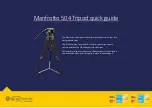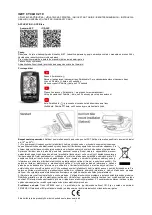
© 2020 sanofi-aventis U.S. LLC. All rights reserved.
SAUS.GLA.17.09.7574(3) 03/20
Simply scan and read
1.
Open the camera
app on your phone
2.
Center the code
on your screen
3.
Tap on the link
pop-up
Prescription Lantus is a long-acting insulin used to treat
adults with type 2 diabetes and adults and pediatric
patients (children 6 years and older) with type 1
diabetes for the control of high blood sugar.
Do not use Lantus to treat diabetic ketoacidosis.
Important Safety Information
Do not take Lantus during episodes of low blood sugar
or if you are allergic to insulin or any of the inactive
ingredients in Lantus.
Do not share needles, insulin pens, or syringes with
others. Do NOT reuse needles.
Before starting Lantus, tell your doctor about all your
medical conditions, including if you have liver or kidney
problems, if you are pregnant or planning to become
pregnant or if you are breast-feeding or planning to
breast-feed.
Change (rotate) your injection sites within the area
you chose with each dose
to reduce your risk of getting
lipodystrophy (pitted or thickened skin) and localized
cutaneous amyloidosis (skin with lumps) at the injection
sites.
Do not
use the same spot for each injection or
inject where the skin is pitted, thickened, lumpy, tender,
bruised, scaly, hard, scarred or damaged.
Heart failure can occur if you are taking insulin together
with certain medicines called TZDs (thiazolidinediones),
even if you have never had heart failure or other heart
problems. If you already have heart failure, it may get
worse while you take TZDs with Lantus. Your treatment with
TZDs and Lantus may need to be changed or stopped by
your doctor if you have new or worsening heart failure. Tell
your doctor if you have any new or worsening symptoms
of heart failure, including:
•
Shortness of breath
•
Swelling of your ankles or feet
•
Sudden weight gain
Tell your doctor about all the medications you take,
including OTC medicines, vitamins, and supplements,
including herbal supplements.
Lantus should be taken once a day at the same time
every day. Test your blood sugar levels while using insulin,
such as Lantus. Do not make any changes to your dose
or type of insulin without talking to your healthcare
provider. Any change of insulin should be made
cautiously and only under medical supervision.
Do NOT dilute or mix Lantus with any other insulin or
solution.
It will not work as intended and you may lose
blood sugar control, which could be serious. Lantus must
only be used if the solution is clear and colorless with no
particles visible. Always make sure you have the correct
insulin before each injection.
While using Lantus, do not drive or operate heavy
machinery until you know how Lantus affects you. You
should not drink alcohol or use other medicines that
contain alcohol.
The most common side effect of insulin, including
Lantus, is low blood sugar (hypoglycemia), which may
be serious and life threatening.
It may cause harm to
your heart or brain. Symptoms of serious low blood sugar
may include shaking, sweating, fast heartbeat, and
blurred vision.
Lantus may cause serious side effects that can lead to
death, such as severe allergic reactions. Get medical
help right away if you have:
•
A rash over your whole body
•
Trouble breathing
•
A fast heartbeat
•
Sweating
•
Swelling of your face, tongue, or throat
•
Shortness of breath
•
Extreme drowsiness, dizziness, or confusion
Other possible side effects may include swelling, weight
gain, low potassium levels, injection site reactions,
including changes in fat tissue at the injection site, and
allergic reactions.
Important Safety Information for
Lantus SoloStar
Lantus SoloStar is a disposable single-patient-use prefilled
insulin pen. Please talk to your healthcare provider about
proper injection technique and follow instructions in the
Instruction Leaflet that accompanies the pen.
What is Lantus?
Please
for full Important Safety Information for Lantus.
Please
for full Prescribing Information for Lantus or scan QR code.























